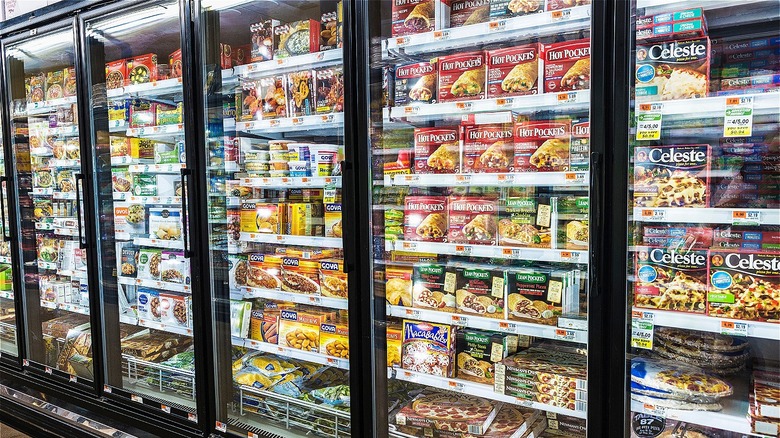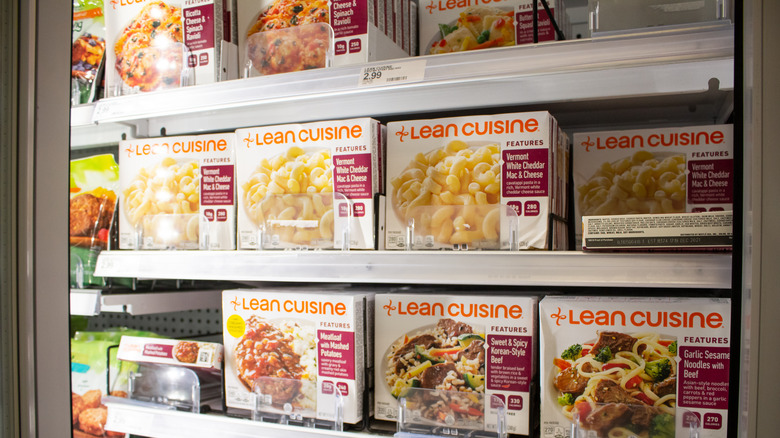Why You Should Never Buy Frozen Meals Unless They're On Sale
The frozen food industry in the United States is at the beginning of a growth curve, according to the global research firm IBISWorld. Additionally, the firm says consumers' ability to "trade up" to premium varieties will prompt manufacturers to up their game with meal kits, restaurant-quality pizza, and ethnic dishes. At Food Navigator, Saffron Roads Foods founder and CEO Adnan Durrani suggested in a 2022 interview that the coronavirus pandemic may be a driver of that renewed interest in frozen meals. As people opted during the height of the pandemic for foods that could be stored for a long time, Durrani suggested, many of them discovered that quality had improved since the last time they had bought frozen foods.
However, the projected upward trend for frozen foods — if it's there — appears to be starting from a lagging interest. Statista, a market and consumer data company, recently reported that for 2021, the latest data available, American households spent an average of $46.45 per consumer unit on frozen meals. That's the lowest annual household spending on frozen meals in the 15 years covered in the Statista study. Annual spending on frozen meals for that time peaked in 2008 at $72.87 per consumer unit, according to Statista. But also according to Statista, Americans spent more than $1.3 billion on single-serving frozen dinners and entrees in 2022. Multiple-serving frozen dinners and entrees accounted for more than $510 million in U.S. consumer spending in 2022, and handheld frozen entrees amassed $775 million in 2022 sales.
Here's when to buy frozen dinners
Regardless of where spending on frozen meals may be headed, Reader's Digest recognizes frozen dinners have a place in planning for days with no time for meal preparation. But, it suggests, consumers should never pay full price for a frozen dinner. That's because no matter when you go to the grocery store, at least one frozen food brand is likely to be on sale. On that note, it may make sense to pay attention to frozen dinner prices during March, which is Frozen Food Month. There's not necessarily any guarantee you'll find deals, but the month does get attention from the National Frozen & Refrigerated Foods Association, which offers promotional assistance to retailers.
When you're searching for value in frozen dinners, you'll likely also want to be sure you're getting high quality. The Cleveland Clinic has a number of suggestions. First, pay attention to the number of ingredients. If there are fewer than seven listed, it's likely you'll be eating "whole food," free of additives and preservatives. Also, watch the saturated fat and sodium content. Frozen dinners with more than 700 grams of sodium and more than 4 or 5 grams of saturated fat are poor choices, according to the Cleveland Clinic. And finally, if your frozen dinner doesn't have a lean protein, whole grain, or starchy vegetable, consider adding something quick and easy to round it out, like a side salad.

